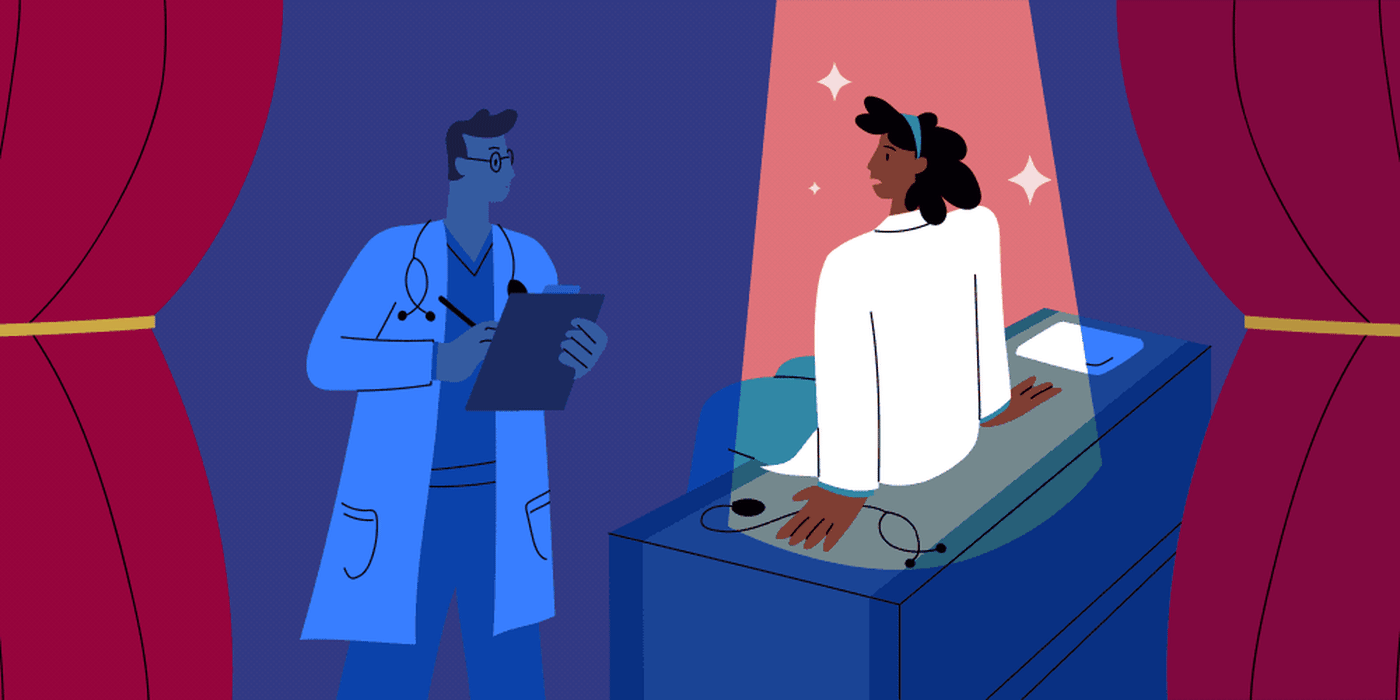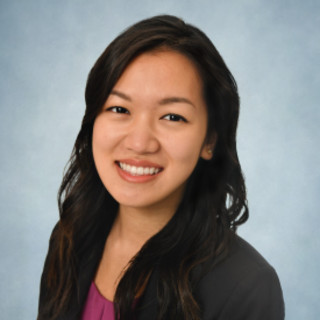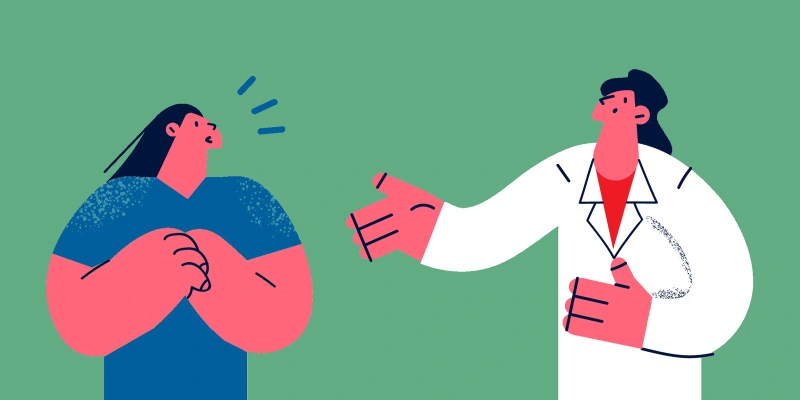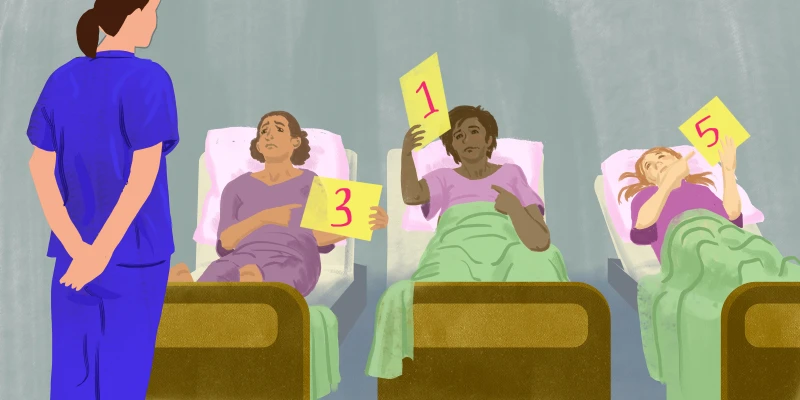I could feel my face flush as I fidgeted with my sweaty palms, perched anxiously on the edge of my seat. Staring into the impassive face of the patient sitting nonchalantly across from me, I managed to stammer out a few more follow up questions in our encounter.
“Does … your heart sometimes beat so rapidly that it feels like it’s flying out of your chest?”
“No.”
“Uh, do you ever feel like you wake up in the middle of the night, gasping for air?”
“No.”
I glanced down at the exhaustive list of symptoms included in my cheat sheet’s review of systems as the minutes ticked by too slowly. I needed to ask every single question, in order, to be comprehensive with my interview. Mercifully, when the encounter ended, Sarah, the standardized patient (SP), immediately settled into a relaxed position with a kind smile on her face. She was no longer playing the role of the anxious 25-year-old woman presenting with abdominal discomfort and bloating. Instead, she asked me a few questions about the interaction, allowing me to reflect on our encounter, and provided me with valuable feedback on the interpersonal aspects of the conversation.
In my first year as a medical student, Sarah was one of the many SPs I interviewed who helped me learn how to establish a therapeutic relationship with a patient. The course was segmented into different modules, each designed to teach skills like basic interviewing, history taking, and physical exam through practice interactions in small-group sessions. Reflecting back on that encounter, I was nervous, trying to remember all the components of the H&P, but not wanting to sound too scripted. Little did I know that years later, the roles would be reversed, and I would be the one in a hospital gown.
The concept of SPs originated with Dr. Howard Barrows in the 1960s, when he worked with a physician who would ask every medical student to work up a real patient from start to finish, observing their technique. After numerous interactions, both Dr. Barrows and the physician realized that there was little consistency in the performance of physical exam maneuvers. Inspired, Dr. Barrows created his own “standardized patient,” who presented with neurologic symptoms, for the students to practice on. Though Dr. Barrows initially observed every interaction himself, the responsibility of providing feedback and direction eventually fell on the SP, who was given a checklist to complete at the end of each encounter.
Decades later, nearly all medical schools in the U.S. utilize a similar approach to introduce medical students to the art of patient interaction. It is thought that SPs provide students with a safe and controlled environment within which they can try out different tactics to elicit personal information and practice physical exam skills. Immediate feedback on performance allows students to reflect on the experience, assessing their own behaviors and how they might improve for the next encounter. Further, gaining practice in how to break bad news — compassionately, in a low-stakes environment — can help prepare students for the real deal. In one systematic review, statistically significant third-party ratings demonstrated improved communication effectiveness after the implementation of an SP program.
Who, then, are the SPs?
Standardized patients are trained individuals, recruited to represent a patient case consistently across multiple sessions. While SPs do not require acting experience, strong communication skills and the ability to receive and provide constructive feedback are important. Ideal candidates are also nonjudgmental, professional, reliable, flexible, and comfortable with the health care environment, according to one job description. Although SPs are commonly members of the lay public, it seems reasonable that another population might embody these desirable characteristics: medical students themselves.
… And that is how I found myself on the exam table, being interviewed by first-year students. At my institution, the University of Pennsylvania, the SP program has been historically staffed by people outside of medicine, but capacity limits due to the recent COVID-19 pandemic led administrators to recruit senior medical students. I was curious about the experience from the other side, so I signed up to be questioned, poked, and prodded. One of the patients I was asked to portray, Anne, was a 30-year-old woman presenting with dysuria and abnormal discharge. The week during which I volunteered was focused on eliciting a social history, including an extensive sexual history; accordingly, my case included concerns about acquiring an STI and feeling unsafe at home. Due to the sensitive nature of the topic, I was asked to provide feedback on how students approached the subject and how I felt as the patient.
Being an SP as a senior medical student taught me multiple things. First, I realized that after a year of being in the hospital during my second year, interviewing and interacting with countless patients, I felt more comfortable than I had as a younger student. Second, being a patient — even a pretend patient — allowed me to better understand the patient experience. As a medical student rotating from service to service, becoming familiar with a field’s technicalities and struggling to find your place in a team, is challenging. Playing a patient afforded me the opportunity to experience the interaction from the other side; certain word choices and body positions, potentially unnoticeable to the clinician, really do impact overall rapport. And finally, answering questions about real-life interactions, helping develop differential diagnoses, and giving clinical pearls based on cases was invaluable. I’ve come away from the experience convinced that utilizing senior medical students as SPs is an affordable, valuable, and effective strategy for honing clinical skills. Though there are potential drawbacks (e.g., awkwardness and less accuracy in portrayals), the opportunity for students to reflect, teach, and give back to their medical school community outweighs these discomforts.
Do you think medical students are more or less ideal to act as SPs than individuals outside medicine? Would you volunteer to act as an SP if you had the opportunity? Share your opinions in the comments!
Originally from Chicago, Beatrice is currently a fourth-year medical student at the University of Pennsylvania Perelman School of Medicine interested in applying into otolaryngology. As an avid painter and artist, she is interested in the intersection of art and medicine, particularly within the context of improving surgical care and patient education. Outside of medicine, she enjoys cooking, drawing, powerlifting, and trying new restaurants in Philly. Beatrice is a 2020–2021 Doximity Op-Med Fellow.
Animation by Diana Connolly







